Related Research Articles
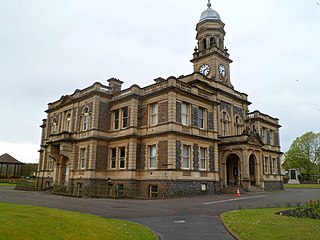
Llanelli is a market town and community in Carmarthenshire and the preserved county of Dyfed, Wales. It is located on the Loughor estuary and is also the largest town in the county of Carmarthenshire.

Carmarthen is the county town of Carmarthenshire and a community in Wales, lying on the River Towy 8 miles (13 km) north of its estuary in Carmarthen Bay. The population was 14,185 in 2011, down from 15,854 in 2001, but gauged at 16,285 in 2019. It has a claim to be the oldest town in Wales – Old Carmarthen and New Carmarthen became one borough in 1546. It was the most populous borough in Wales in the 16th–18th centuries, described by William Camden as "chief citie of the country". Growth stagnated by the mid-19th century as new settlements developed in the South Wales Coalfield.

Huw Edwards is a Welsh former news presenter. He was the lead presenter of BBC News at Ten, the late evening news programme of the BBC, from 2003 to 2023. He resigned from the BBC in 2024, during a police investigation into child pornography offences to which he pleaded guilty.
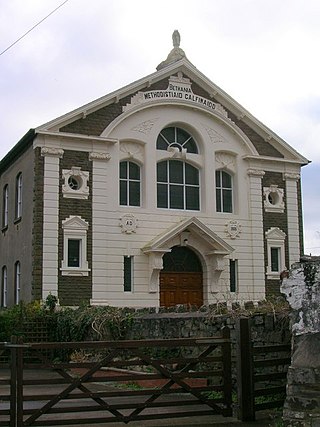
Glanamman is a mining village in the valley of the River Amman in Carmarthenshire, Wales. Glanamman has long been a stronghold of the Welsh language; village life is largely conducted in Welsh. Like the neighbouring village of Garnant it experienced a coal-mining boom in the 19th and early 20th centuries, but the last big colliery closed in 1947 and coal has been extracted fitfully since then.

Llangennech is a village and community in the area of Llanelli, Carmarthenshire, Wales, which covers an area of 1,222 hectares (4.72 sq mi).
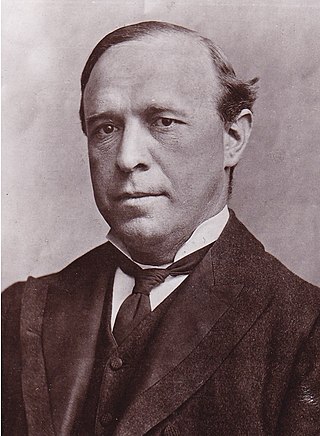
William Llewelyn Williams known as Llewelyn Williams, was a Welsh journalist, lawyer and radical Liberal Party politician.

The Reverend David Rees was a Welsh Congregational minister of Capel Als chapel Llanelli, Carmarthenshire, and an editor of a radical Welsh language Nonconformist periodical titled Y Diwygiwr. Known as 'Y Cynhyrfwr', he held radical political views and opposed the relationship between the Established Church and the state.

Howell Elvet Lewis, widely known by his bardic name Elfed, was a Welsh Congregational minister, hymn-writer, and devotional poet, who served as Archdruid of the National Eisteddfod of Wales from 1924 to 1928.

Capel Heol Dŵr was a Calvinistic Methodist chapel in the town of Carmarthen, Carmarthenshire, Wales. The building dates from 1831 and is located at Water St, Carmarthen. It was designated as a Grade II listed building on 19 May 1981.
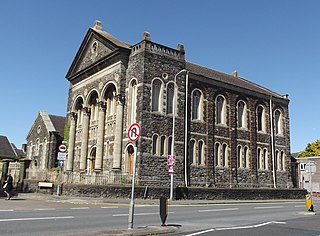
Tabernacle Chapel is an Independent (Congregational) chapel in the town of Llanelli, Carmarthenshire, Wales. It was built in 1872 and is located at 17 Cowell Street. It is a Grade II* listed building.

Zion or Seion Baptist Chapel is a Baptist chapel in the town of Llanelli, Carmarthenshire, Wales. It was built in 1857 and is located at Island Place, close to the junction of Water Street with Upper Park Street.
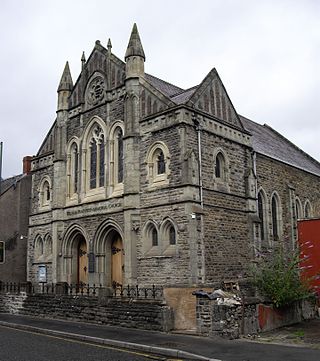
The Williams Pantycelyn Memorial Chapel is a Calvinistic Methodist chapel in the town of Llandovery, Carmarthenshire, Wales. The building was constructed between 1886 and 1888 and is located at 4 Stryd y Bont, Llandovery. It was built as a memorial to the Welsh hymn writer William Williams Pantycelyn.

Capel Als is an Independent (Congregational) chapel in Llanelli, Carmarthenshire, Wales, It is regarded as one of the most significant religious buildings in Wales. Folk tradition suggested that the name refers to a woman named Als, which along with Alys is the Welsh equivalent of the English name Alice, whose cottage stood where the chapel was built. Another theory contends that the Welsh word als translates as rock, and there is a rock-face behind the chapel. However, there is no word "als" in Welsh meaning rock, and so this latter explanation may be safely disregarded.

Thomas Johns was a Welsh Independent (Congregationalist) minister, best known for his pastorate at Capel Als, Llanelli, one of the largest chapels in Wales, from 1869 until his death in 1914.
Daniel John Davies was a Welsh Independent (Congregationalist) minister and Welsh language poet. He published under the name 'D.J. Davies' and was also well known as 'Davies Capel Als'.
Siloah was an Independent (Congregationalist) chapel in Copperworks Road, Seaside, Llanelli, Carmarthenshire. Services at Siloah were conducted in the Welsh language.
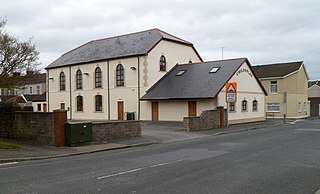
Soar Welsh Independent Chapel was an Independent (Congregationalist) chapel in Marsh Street, Llanelli, Carmarthenshire, Wales. Services at Soar were conducted in the Welsh language.

Ebenezer was an Independent (Congregationalist) chapel in Inkerman Street, Llanelli, Carmarthenshire, Wales. Services at Ebenezer were conducted in the Welsh language.

Bethany was a Calvinistic Methodist/ Presbyterian Church of Wales chapel in Ammanford, Carmarthenshire, Wales, from 1881 to 2023.
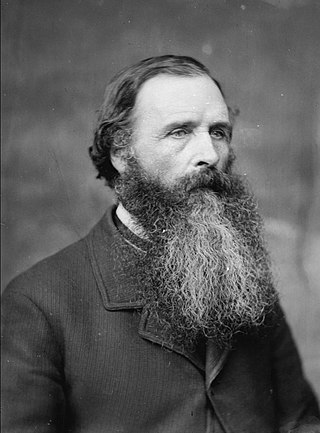
Richard Owens was a Welsh architect, working mostly on urban housing in Liverpool, England and on the construction of chapels in Wales.
References
- ↑ Edwards 2009, p. 212.
- ↑ Edwards 2009, pp. 211–2.
- ↑ Edwards 2009, p. 214.
- ↑ Edwards 2009, pp. 205–9.
- ↑ Edwards 2009, p. 209.